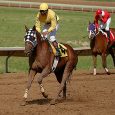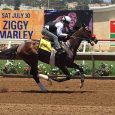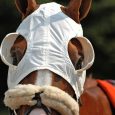For those betting on horses for the first time, the variety of options can be intimidating. Nevertheless, wagering on a horse race is nothing complicated. Here we will give a look to the most common bets:
WIN (winner): As the name implies, this is a bet that you win if your horse wins the race (officially finishes first). The minimum amount for this type of play is typically $2. The amount one will collect will depend of the final odds of the horse, with the proportion of gambling dollars deciding those final odds. In the official program, the estimated win odds for each participant (morning line) are shown. A smart player will compare these estimates with the actual proportions bet in the win pool.
There are two terms related to this process, namely:
- Overlay: A horse whose betting odds are greater than its morning line odds. Many fans are looking for opportunities with this type of horses. However, bettors should be wary when the horse in question is the morning line favorite, as the generous odds at post time might indicate an issue of some sort.
- Underlay: It is the opposite case, i.e. the payoff on the horse is lower than that estimated by the morning line. Although many avoid this kind of sample, it is interesting to take them into account when it comes on horses with a high morning line, since this can reveal horses with a better-than-expected chance of winning.
How much is gained? The calculation of the dividend is quite simple. For example, let’s say you bet on a horse with final odds of 4-1. If this horse wins, you receive $10 for every $2 bet:
4.0 (final odds) x $2 (amount wagered) + $2 (value of the bet) = $10 (total to collect)
PLACE (second-place or better): A bet where you have two opportunities to win, since you collect if your horse finishes first or second. The minimum amount for this type of play is generally $2. Many gamblers divided their investment between winner and place. That way, if the horse selected does not win, but comes in second, he/she can recover part of the bet or even make money.
SHOW (third-place or better): In this bet you win if your horse arrives in the first three places in the race. The payoffs are usually pretty low, so some recommend show bets only when the selected horse(s) have high odds. However, the show prices can be greater or lesser depending on which other horses occupy the other two finishing places.
SUGGESTIONS
- Many suggest that novices bet to place and show while they learn the game. The most advanced gamblers suggest betting only to win.
- You should not bet every race. It is almost impossible to predict the winner in every competition of a program. As players become familiar with how to analyze a race, he/she will learn which races to bet and which to pass (and it can vary depending on one’s areas of expertise and gambling style).
- It is not the best idea to always bet on the favorite. Statistics indicate that the favorite wins approximately 1/3 of the time — meaning 2/3 of the time a non-favorite wins!
- Important: Do not bet more than what they are willing to lose. Betting on the races should be a fun. If the fun ends, the betting should end too.




